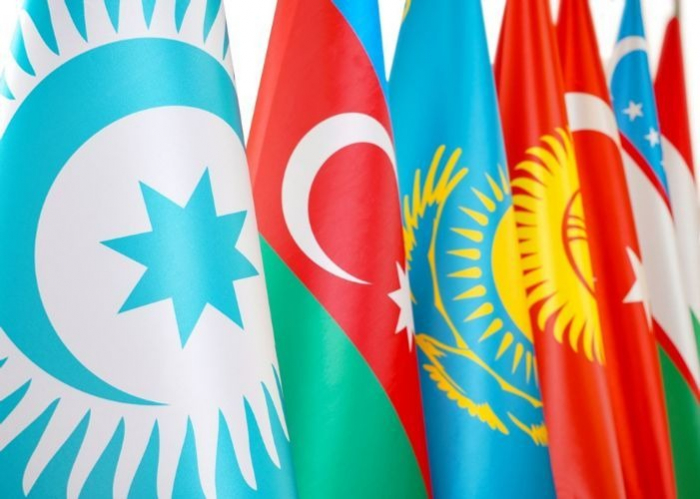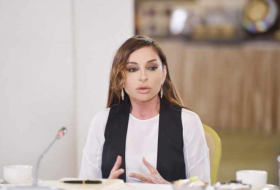AzVision.az talked to Ravshan Nazarov, Candidate of Philosophy, and senior research fellow at the Institute of State and Law under the Academy of Sciences of the Republic of Uzbekistan to discuss the Turkic heritage and eminent Turks who wrote history.
- What has been the contribution of the Turkic states and peoples to universal history?
‘They have had a tremendous one. This applies to all regions where Turks have lived and still do, be it Altai (Siberia in general), northwest China, Central Asia, the Ural-Volga region, North and South Caucasus, Turkey, the Balkan Peninsula, Cyprus, etc.
Many Turkic states have left a noticeable mark in history: the First Turkic Khaganate (5th-early 7th century) running from Manchuria to the Black Sea, Eastern Turkic Khaganate (7th century) from Kashgar to the Pacific Ocean, Western Turkic Khaganate (7th century) from the Black Sea to northeast India, Second Turkic Khaganate (7th-8th century), the Turgesh Khaganate (8th century), Uyghur Khaganate (8th-9th century), the Karluk state (8th-10th centuries), Oghuz State (8th-11th century), the Ghaznavids (10th-12th centuries), the Kara-Khanid Khanate (10th-13th centuries), Khwarazmshahs (11th-13th centuries), Timurid Empire (14th-early 16th centuries), the Sheibanid state (15th-16th centuries), Khanate of Khiva of the Arabshahs (16th-18th centuries) and Kungrats (18th-20th centuries), Khanate of Kokand of the Ming dynasties (18th-10th centuries), Emirate of Bukhara of the Mangyt dynasty (18th-20th centuries) and many others.
Our region of Central Asia alone has been the cradle of eminent historical characters – both statesmen and politicians – such as Shegui Khagan, Tong Yabghu Khagan, Chegin Chur Bilga, Ashina Huseluo, Uch-Elig Khagan, the Tausug, Ali Khan, Shah-Malik, Bilge Kul Qadir Khan, Satuq Bughra Khan, Sabuktigin, Bahram Shah, Ala al-Din Tekish, Amir Timur, Babur, Sherghazy Khan, Said Muhammad Ali-Khan, Muhammad Rahim Khan of Khiva, Said ‘Abd al-Ahad Khan, Fayzulla Xo’jayev, Yuldash Akhunbabaev, Sharof Rashidov, Islam Karimov and many others.
- military commanders – Jaloliddin Manguberdi, Yaqub Beg, Dzhurabek, Baba-Beg, Matmurod Devonbegi, Sheikh Nazar (Yasaulbashi), General Sobir Rahimov, General Fayzulla Norxo’jayev, General Sabir Akhundzhanov, General Qobul Berdiev, etc.
- scientists, thinkers – Al-Farabi, Muhammad al-Khwarizmi, Ahmad Al-Farghani, Abu Rayhan Al-Biruni, Ulugh Beg, Ali Qushji, Ibraghim Muminov, Habib Abdullayev, Yalkin Turakulov, Shavkat Ayubov, etc.
- clergy – Ahmad Yasawi, Muhammad al-Bukhari, Yaqub al-Charkhi, Muhammad at-Tirmidhi, Ziyauddinkhan ibn Ishan Babakhan, and many others
- literati – Mahmud al-Kashgari, Yusuf Balasaguni, Ahmad Yugnakiy, Jamaladdin at-Turki, Alisher Navoi, Boborahim Mashrab, Muqimiy, Furqat, G’afur G’ulom, Oybek, Kamil Yashin, Raim Farhadi, Erkin Vohidov, Javdat Iljasov, Maqsud Shayxzoda, and many others
- artists and calligraphers – Kamal ud-Din Behzad, Samig Abdullayev, Rahim Akhmedov, Uran Tansykbayev, Mubarak Yuldashev, Chingiz Akhmarov, Tursunali Qo’ziyev, Azad Khabibulin, Ruzi Chariev, and many others
- historians – Nizamuddin Shami, Khwandamir, Dawlatshah Samarqandi, Mirza Muhammad Haidar, Abu al-Ghazi, Muhammad Yusif Munshi, Mirza Shams Bukhari, Niyaz Mohammad Khokandi, Mulla Musa Sayrami, Hoja Samandar Termezi, Muhammad Bayani, Mirza Salimbeg, Mulla Ishak and many others
- pilots-astronauts – Vladimir Dzhanibekov, Salizhan Sharipobv, Toktar Aubakirov, Talgat Musabayev, Aidyn Aimbetov.
- directors – Khudaibergen Devanov, Kamil Yarmatov, Ali Hamroyev, Melis Abzalov, Shuhrat Abbosov, Ravil Batyrov, Nabi G’aniyev, Elyor Ishmukhamedov, Timur Bekmambetov, Dzhanik Fayziev, Yusuf Razikov, Firudin Safarov and many others.’
- How did the Mongol campaigns of the 13th-15th centuries influence the socio-economic and cultural life of the Turkic peoples?
‘It’s not entirely correct to call the events of the 13th-15th the ‘Mongol campaigns’ because the Turkic peoples took an active part in them at the very least. Moreover, the armies of Mongol states largely comprised Turkic warriors and commanders. The Turkic ethnic groups were also largely represented in the government machinery. For example, the first governor of the Chagatai Khanate from 1225 to 1238 was Mahmud Yalavach from Khwarazm, while his son Maksud-Beg Khwarazmi was the administrator of Bukhara. As his father resigned, Maksud-Beg became the governor of the entire Transoxiana and remained so for half a century (1238-1289). His merits include monetary reform, establishing trade, regulating tax collection, preventing intestine wars, and developing culture and education. He was especially famous for opening madrasahs, Masudiye standing prominently among them, which could accommodate over a thousand students.
As a matter of fact, the Ferghana Valley and Zhetysu (Seven Rivers) Turks had internal autonomy within the Ulus. Turks overall had a significant place in the state structure of the Mongol Empire. Suffice it to recall personalities such as the female regent Töregene Khatun (widow of Ogedei Khan, came from the Merkit Turks), State Chancellor Chinkai (from the Keraites), Arghun Aqa (governor of Persia and the Caucasus), Nawruz (general, Arghun Aqa’s son), Korkuz and Abaqa Tubshin (governors of Khorasan) and many more.
It was the Mongolian army that first formed the military ranks of warriors and commanders, which later became the foundation of Amir Temur’s army. He went on to establish a true Turkic power, which ran from the Mediterranean Sea to the borders of India and China.
Amir Temur was one of the most famous representatives of Turkic peoples of Central Asia. He was born in 1336 and died in 1405. He was known under many names, such as Tamerlane, Timur ibn Taragai, Timur Barlas, Timur the Lame, Timur Gurgan, Temur Sahibkiran.
As the Chagatai Ulus collapsed and divided into Transoxiana (modern day Uzbekistan) and into the reduced realm of Moghulistan (modern day northern Kyrgyzstan and south-eastern Kazakhstan), a myriad of young Turkic statesmen came forward (Tughlugh Timur, Emir Hussein, Muhammad Beg, Suyurgatmish, etc.), Timur standing prominently among them. At the age of 34 – in 1370 – he became the emir of Great Turan. Over several decades he grew the territories under his reign, uniting countless states and peoples that ran from the Mediterranean Sea to the borders of Iran and China.’
- What are some of the great scientific achievements in the history of the Turkic world?
‘Up until 1991 there was only one sovereign Turkic state on the political map of the world, and it was Turkey. 5 more joined the scene in 1991 – Azerbaijan, Kazakhstan, Kyrgyzstan, Turkmenistan, and Uzbekistan. The historical science of all Turkic states entered a stage of growth. Hundreds of monographs and thousands of articles have been published, dozens of theses defended in 30 years of independence in Uzbekistan alone. Some of the most notable academic publications by Uzbekistani scientists are the following: ‘Uzbeks’ (Moscow: Nauka, 2011), ‘Ethnocultural processes in a contemporary cosmopolitan city’ (Tashkent, 2011), ‘Oral history in Uzbekistan: theory and practice’ (Tashkent, 2011), ‘History of Uzbekistan – 16th-early 19th centuries’ (Tashkent, 2012), ‘History of social and cultural formation in the Caucasus and Central Asia in 19th-early 20th centuries’ (Samarkand: IICAS, 2012), ‘From the history of military affairs of Uzbekistan’ (Tashkent, 2012), ‘Essays on history of the ancient cities of Uzbekistan’ (Tashkent, 2013), ‘Khwarazm in the history of statehood of Uzbekistan’ (Tashkent, 2013), ‘History and historians of Uzbekistan in the 20th century’ (Tashkent, 2014), ‘Historical studies in the context of intellectual development of Central Asia’ (Tashkent, 2014), ‘History of Central Asia in the interpretation of modern medieval studies’ (Tashkent, 2014), ‘Stratification of Uzbekistani society in the context of historical processes’ (Tashkent, 2014), ‘Essays on the recent history of Uzbekistan’ (Tashkent, 2015), ‘History of Uzbekistan from 1917 to 1991’ in two volumes (Tashkent, 2019), ‘The recent history of Uzbekistan’ (2020) and many others.
During independence, Uzbekistan has hosted several large-scale international conferences, such as ‘Recent history of Central Asia: Problems of theory and methodology’ (2015), ‘Bukhara – a city on the Great Silk Road – one of the centers of world tourism’ (2016), ‘Social sciences: State, development, and issues’ (2016), ‘Urgent issues of Uzbekistani ethnology’ (2017), ‘Action strategy for further development of the Republic of Uzbekistan and spiritual and cultural improvement in the country’ (2018), ‘History of the Fergana Valley in new research’ (2019), ‘Central Asia in International Relations of the 18th-19th centuries’ (2020), ‘Uzbekistan and Central Asia in the system of world civilization’ (2020), ‘Languages and literature in a multicultural space’ (2021), etc.
The prominent historians in modern Uzbekistan are archaeologists – Ahmadali Askarov, Rustam Suleymanov, Farhad Maksudov, Abdulhamid Anarbaev; medievalists – Bahrom Abduhalimov, Mirsadyk Ishakov, Azimhoja Atahojaev, Gaibulla Babayarov; specialists on modern age history – Ravshan Abdullaev, Dilorom Alimova, Shuhrat Muhamedov, Shuhrat Ergashev, Bahodir Pasilov, Bakhtiyor Babajanov, Saidakbar Agzamhojaev; specialists on the most recent history – Mirzohid Rahimov, Erkin Nuriddinov, Alisher Sabirov, Shavkat Rahmatullaev; ethnologists – Zoya Arifkhanova, Sherzod Abdullayev, Adham Ashirov, Gulchehra Zununova, Saodat Davlatova, Barno Ubaidullaeva, Asror Kayumov, and many others.
The principal centers for historical studies in Uzbekistan and related scientific disciplines such as archeology, ethnology, cultural studies, oriental studies, historical and political research, historical and social research, historical and legal research, historical linguistics, etc., are the International Institute for Central Asian Studies (IICAS) under UNESCO, Central Asian International Institute (CAII), National Centre of Archeology at the Academy of Sciences of the Republic of Uzbekistan (ASRUZ), Institute of Oriental Studies at ASRUZ, Fine Art Institute at ASRUZ, Coordinating and Methodological Centre for Contemporary History of Uzbekistan, Karakalpak Research Institute for the Humanities, Khorezm Mamun Academy, State Museum of History of Uzbekistan State Museum of Timurids History, Institute of Uzbek Language, Literature and Folklore at ASRUZ, Institute of State and Law at ASRUZ, History departments at leading universities – National University of Uzbekistan, Tashkent State University of Oriental Studies, Tashkent State Pedagogical University named after Nizami, Samarkand State University – and others.
Uzbekistani scientists actively cooperate with colleagues from Azerbaijan, Kazakhstan, Kyrgyzstan, Turkmenistan, Turkey, and the Turkic regions of Russia – Bashkortostan, Tatarstan, Altai, etc. I have personally been fortunate enough to repeatedly take part in events in the centres of Turkic cultures, such as Almaty, Astana, Ashgabat, Baku, Bishkek, Kazan, Mary, Osh, Istanbul, Taraz, Turkestan, Uralsk, Ufa, Shymkent and many others. Developing a unified history of the Turkic peoples is currently on the agenda both in academic and popular formats.
AzVision.az Analytical Team
More about:
















































